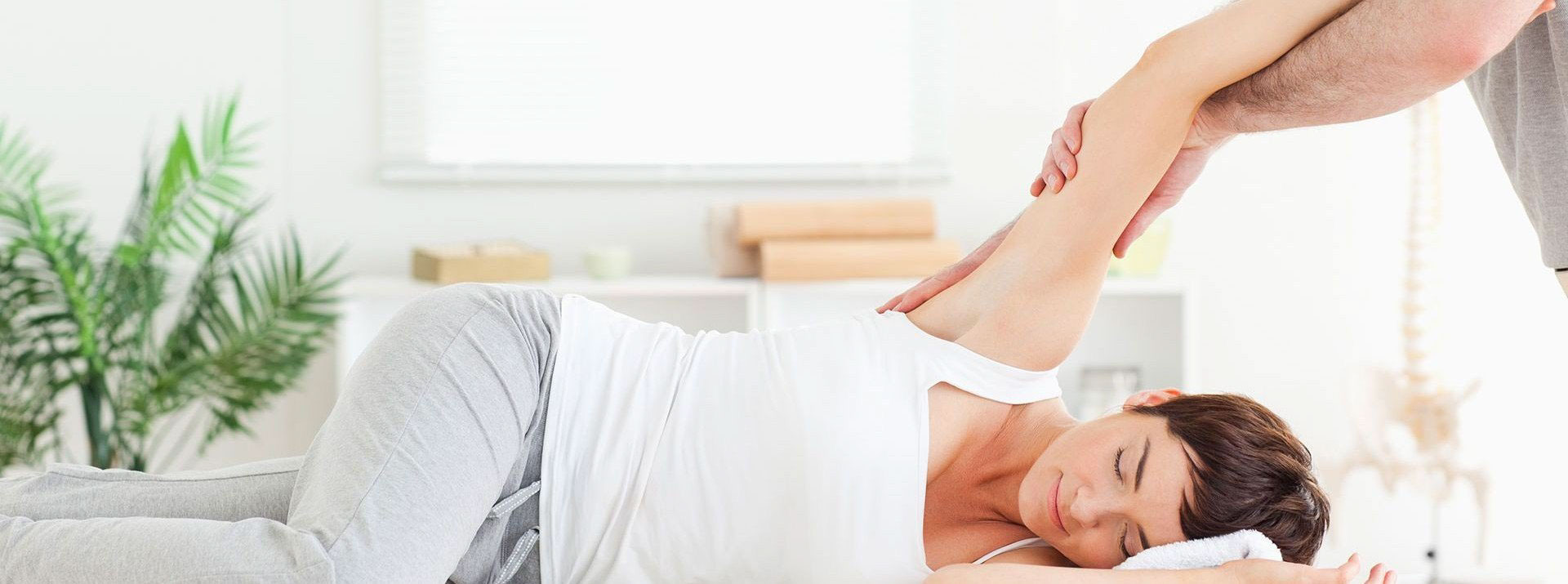
SPACE & BIOPHILIC DESIGNRe-imagining Physiotherapy Spaces20 May, 2017
To create an environment to promote wellness borrowing core principles from Biophilic Design. Using content analysis of data collected through primary and secondary research on the current scenario of the physiotherapy healthcare sector in India and Pro- Physio’s position in the industry, while keeping in mind Pro-Physio’s mission to go global by 2021.My aim for Pro-Physio is to provide design guidelines that will help in promoting wellness and help in enhancing the patients experience in the hospital or clinic. Physiotherapy clinics can be very displeasing due to there clinical environments. Physiotherapy requires patients to be regular and discipline with there routine to stay on track for recovery but the way the physiotherapy clinics are designed makes patients not trust and lose interest in coming back to follow and stay in routine. Biophilic Design patterns help in solving these problems, it not only makes the space pleasing and serene but also have positive effects on one’s mental and physiological state.
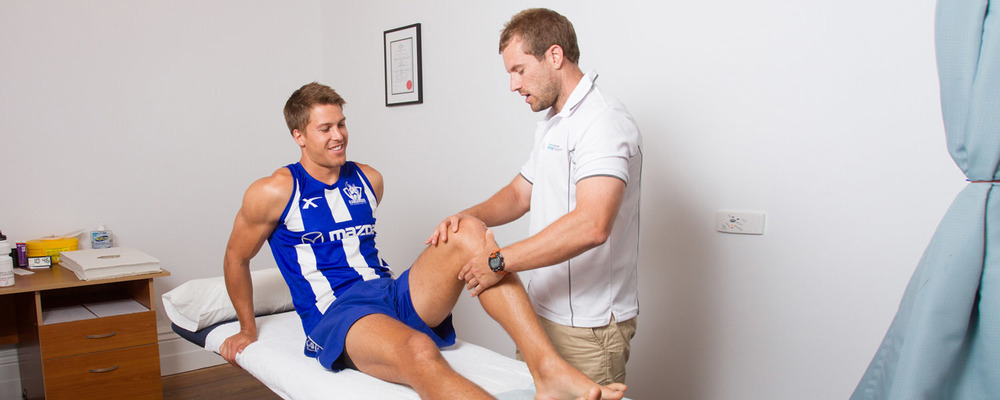
Benefits of PhysiotherapyHealthy: Physiotherapy is concerned with enhancing quality of life.Functional Movement: Movement potential is vital within the spheres of promotion, prevention, treatment, habilitation & rehabilitation.Wholistic Wellbeing: It encompasses physical, psychological, emotional, and social wellbeing.Preventive Care: The market is on the rise in the field of preventive healthcare where physiotherapy plays an important role.
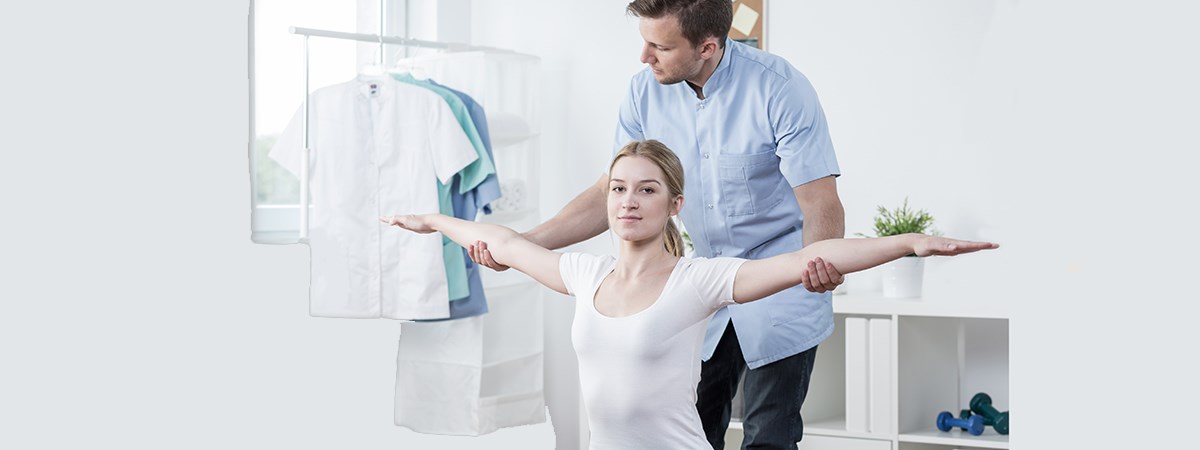
Current Problems based on the Industry / ClientComplimentary Services: Physical therapy services maybe provided alongside, or in conjunction with other medical services. People do not visit a physiotherapist until and unless recommend by a doctor.Misjudged: Physiotherapy is looked as a cure for an illness and not as wellness for the body.Undervalued / Unrecognized: Physiotherapy falls in the low value domain, as it is not recognized.Displeasing Spaces: Physiotherapy clinics maybe very displeasing due to there clinical environments.
Primary Research | People Tree Hospital, Bangalore | Field Visit Accessibility: Physiotherapy clinics and centers are not easily accessible and approachable by patients.Spatial Experience: Physiotherapy clinics and centers can we very intimidating due to its clinical experience. The space isn’t very inviting, comfortable and is very depressing.Time Intensive: Physical therapy is a slow and a time intensive process, it requires a lot of patience and discipline.Recovery Process: The results one sees may take up weeks or months to show up.Patient – Practitioner Relationship: The relationship between the patient and the practitioner play an important role in the entire process of physiotherapy.
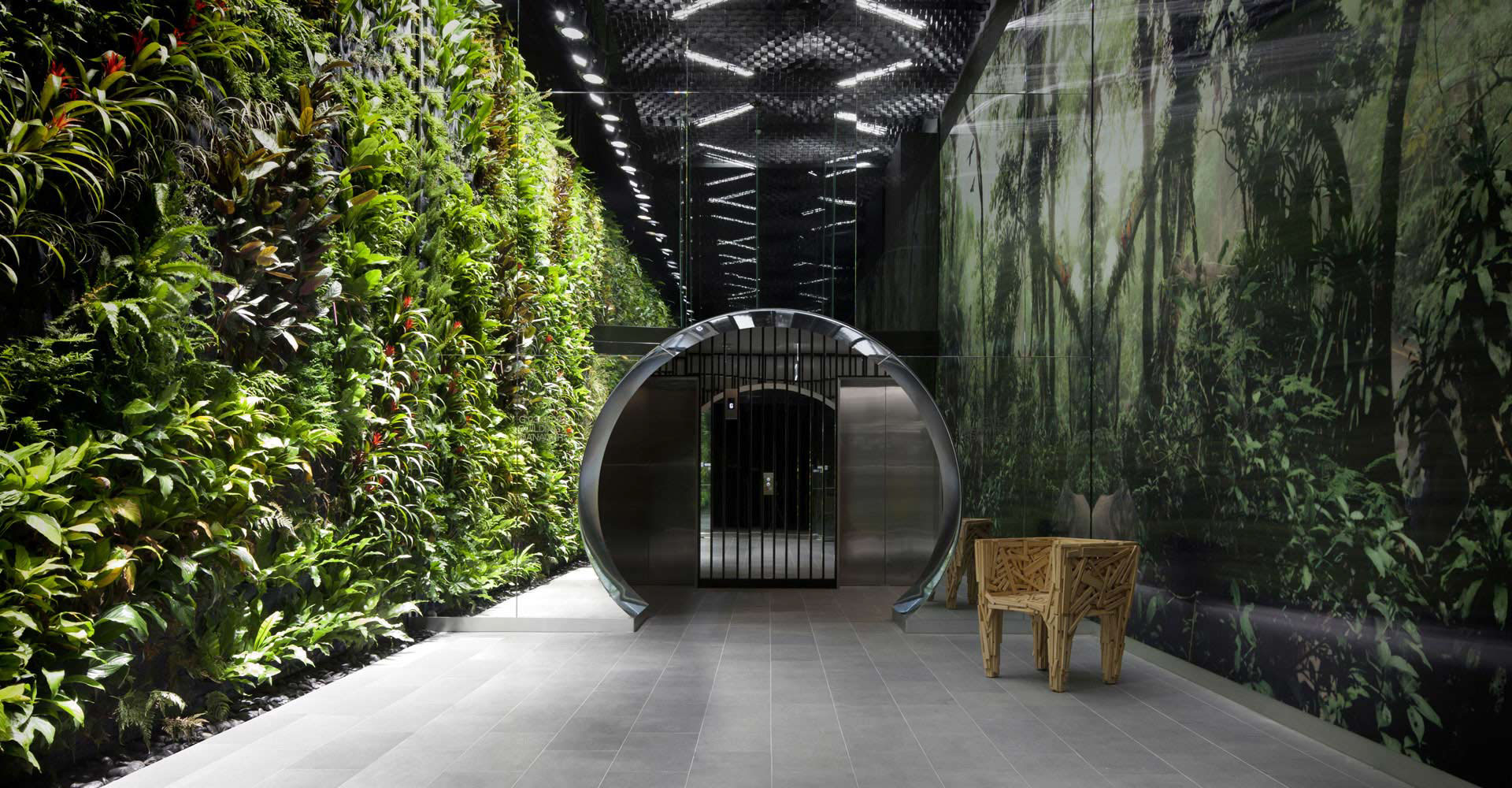
Secondary Research | Biophilic DesignImproving Health & Well- being in built environmentsBiophilic Design is an innovative way of designing the places where we live, work, and learn. We need nature in a deep and fundamental fashion, but we have often designed our cities and suburbs in ways that both degrade the environment and alienate us from nature.
Biophilic Design Patterns & Biological Responses© 2014 Terrapin Bright Green / 14 Patterns of Biophilic Design
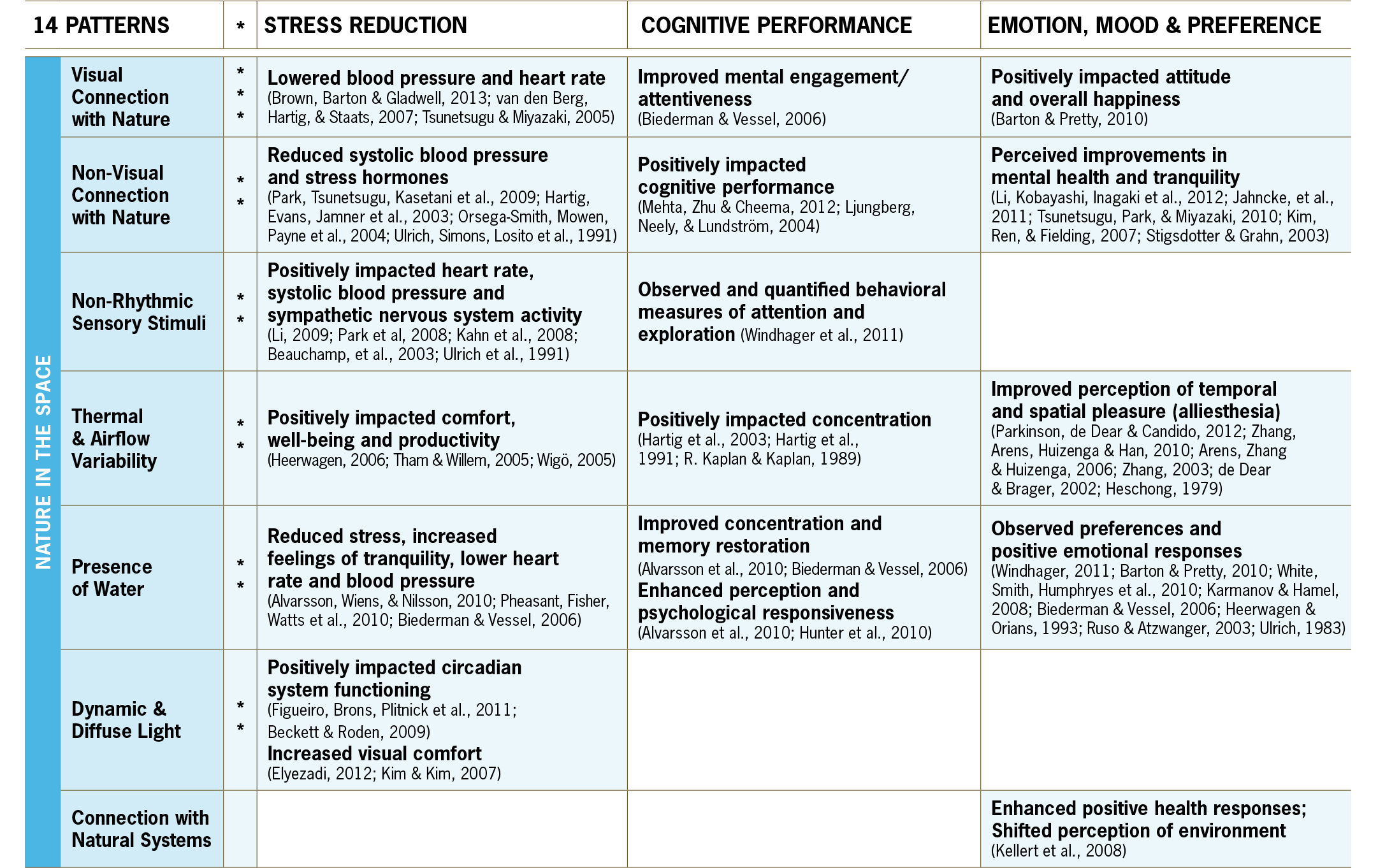
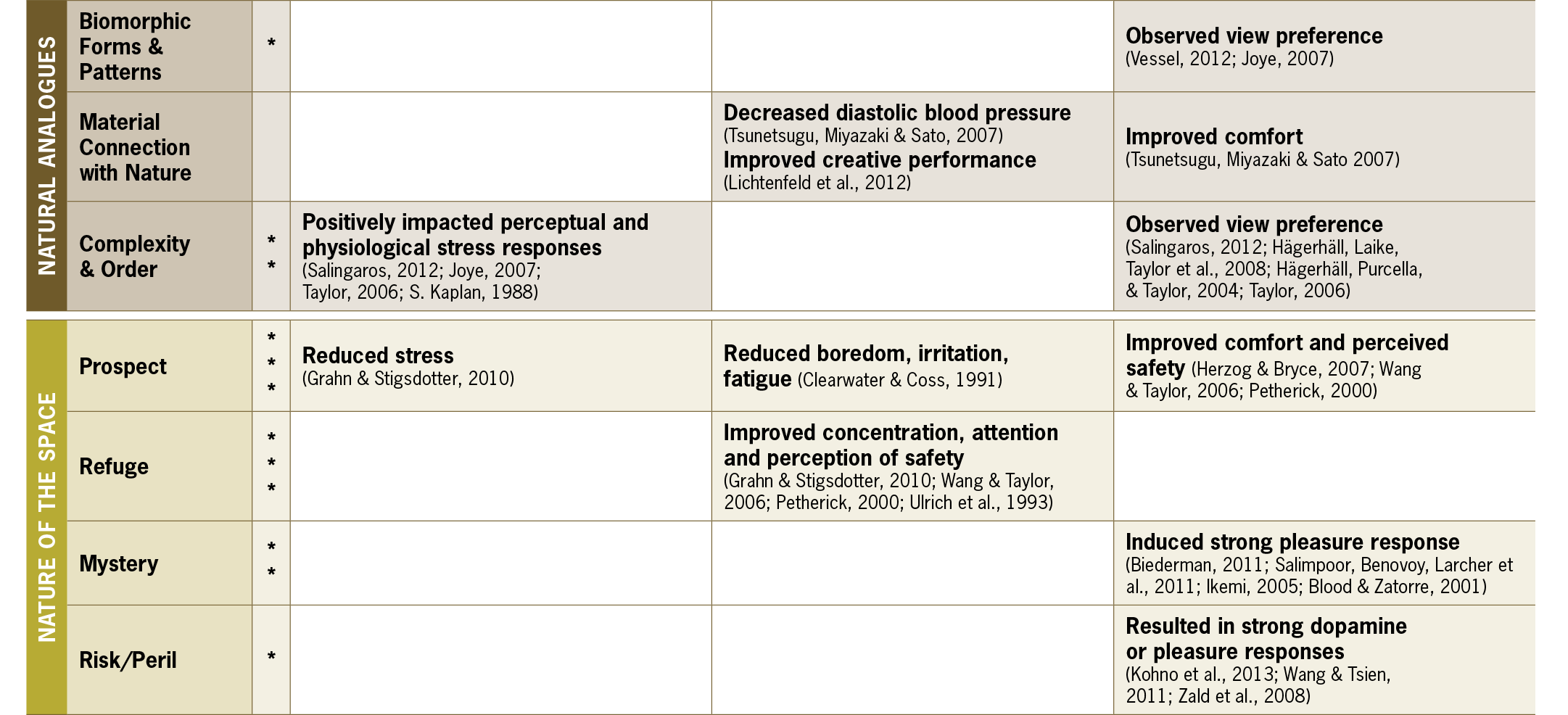
Concept Testing | Image SortingImage Sorting is a design method that helps in finding people’s thoughts and attitudes about a topic by having them sort through symbolic images.In this situation the design method ‘Image Sorting’ was used to test the concept. The concept being to create an environment that promotes wellness by borrowing core principles from Biophilic Design. The participants were shown a variety of images of places, objects and different space settings in order to get their perception and their feelings about nature in built environments such as hospitals and clinics.
CriteriaBased on the observation & insights from the Concept Testing and primary and secondary research i came up with a basic criteria that will help design spaces for physiotherapy.
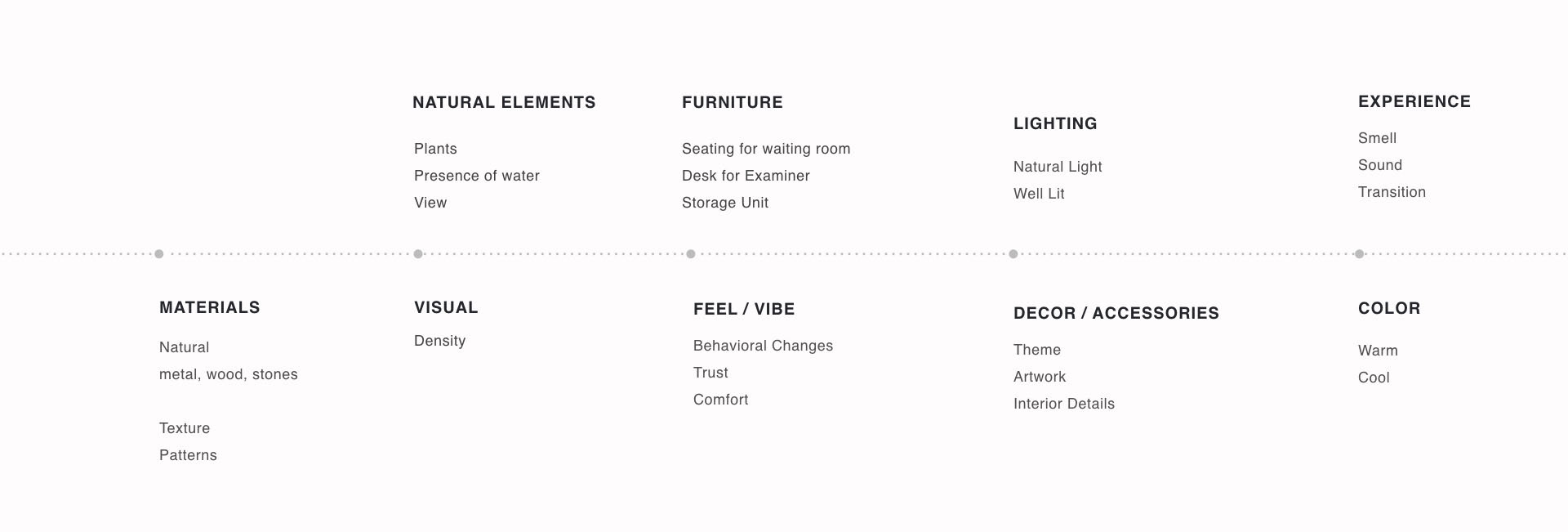
Space Design GuidelinesUsing content analysis of data collected through primary & secondary research, here are devised space design guidelines for several scenario which will help enhance the experience of Physiotherapy.
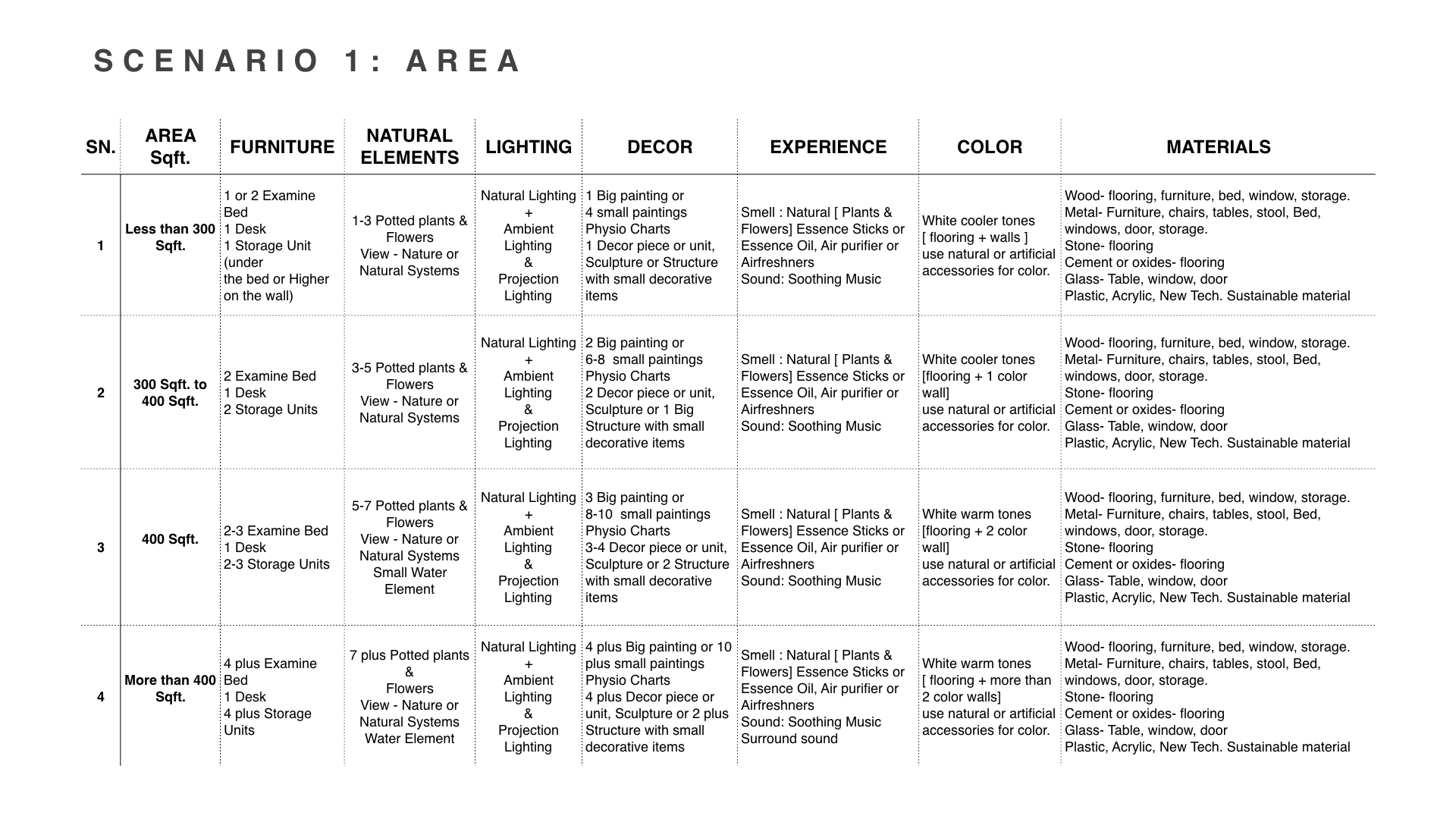
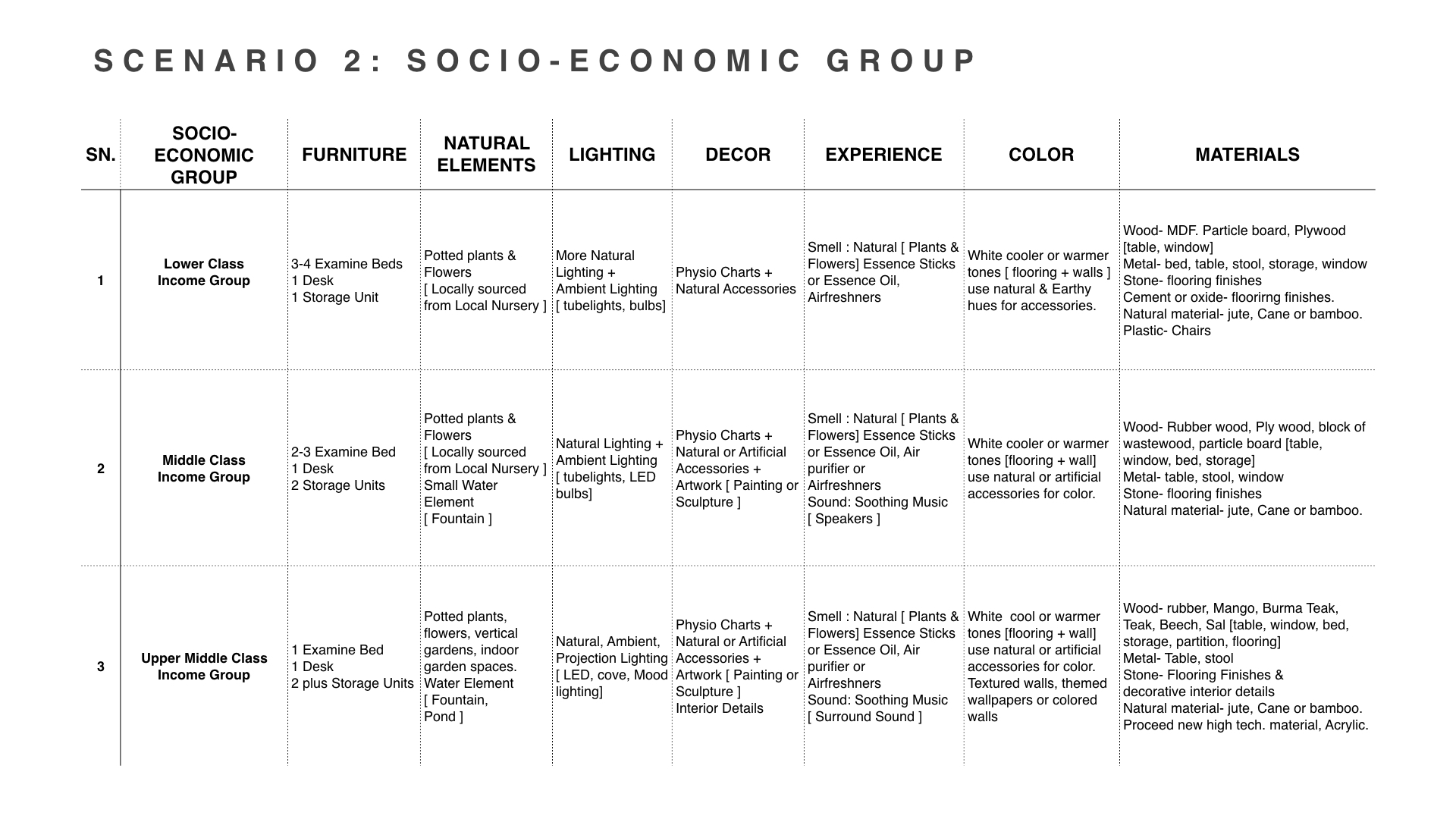
Final Prototype SamplesUsing content analysis of data collected through primary & secondary research, here are devised space design prototypes of several scenario which will help in understanding and act as a guide to designing physiotherapy clinic in the future.
Sample OneSocio – Economic Group: Upper Middle Class Income GroupArea: 12.5 ft. X 14 ft.Type: In- ClinicSpace DetailsFurniture: 1 Examine Bed, Side Table, 1 Examine Chair, Storage & Decor Structure.Natural Elements: 3 potted plants, 2 Flowers vases, Nature View.Lighting: Natural lighting, Ambient Lighting [ LED cool white Tubelight]Decor: 4 small paintings, 2 Physio Charts, 1 structure with small decorative itemsColor: White cool tones, natural and artificial accessories.Experience: Smell [ flowers]Material: Rubber Wood & MDF, Storage, bed, Decor Structure, side table Metal- side table, Glass & Metal- Window, Stone- Beige tiles flooring, Natural Material [Cane]- examine chairBiophilic Design Patterns & Biological ResponsesVisual Connection with Nature:• Lowered Blood Pressure• Improved Mental Engagement / attentiveness• Positively impacted attitude and over all happinessNon – visual connection with Nature:• Reduced systolic blood pressure & stress hormone • Positively impacted cognitive performance• Perceived improvement in mental health & tranquilityThermal & airflow variability:• Positively impacted comfort well- being & productivity• Positively impacted concentration• Improved perception of temporal & Spatial pleasure (Alliesthesia)Dynamic & Diffused light:• Positively impacted Circadian System functioning • Increased Visual comfortMaterial Connection with Nature:• Decreased diastolic blood pressure • Improved creative performance• Improved Comfort
Sample TwoSocio – Economic Group: Lower Class Income GroupArea: 10 ft. X 15 ft.Type: In- ClinicSpace Details:Furniture: 1 Examine Bed, Side Table, 1 Examine Chair, Storage & 1 DeskNatural Elements: 1 potted plants, 3 Flowers vases, Nature View.Lighting: Natural lighting, Ambient Lighting [white Tubelight & bulb]Decor: 2 small paintings, 2 Physio chartsColor: White warm tones, natural and artificial accessories.Experience: Smell [ flowers, air fresher]Material: MDF & Particle BoardMetal- Bed, Metal & MDF- desk, Side table Wood & Metal- Window, Stone- terrazzo tiles, Plastic- Chair, Natural Material [Jute]- Floor MatBiophilic Design Patterns & Biological ResponsesVisual Connection with Nature:• Lowered Blood Pressure• Improved Mental Engagement / attentiveness• Positively impacted attitude and over all happinessNon – visual connection with Nature:• Reduced systolic blood pressure & stress hormone • Positively impacted cognitive performance• Perceived improvement in mental health & tranquilityThermal & airflow variability:• Positively impacted comfort well- being & productivity• Positively impacted concentration• Improved perception of temporal & Spatial pleasure (Alliesthesia)Dynamic & Diffused light:• Positively impacted Circadian System functioning • Increased Visual comfortMaterial Connection with Nature:• Decreased diastolic blood pressure • Improved creative performance• Improved Comfort
Sample ThreeSocio – Economic Group: Upper Middle Class Income GroupArea: 12 ft. X 13 ft.Type: Stand AloneSpace Details:Furniture: 1 Examine Bed, Side Table,1 Partition, waiting area [ 2 chairs & small table ]Natural Elements: 2 potted plants, 2 Flowers vases, vast Nature View.Lighting: Natural lighting, Ambient Lighting [ warm white LED lights]Decor: 1 big painting, decorative items on the side tableColor: White cool tones, natural and artificial accessories.Experience: Smell [ flowers, essence sticks]Material: Burma teak, Teak bed, side tables, partition, flooring Glass & Wood- WindowBiophilic Design Patterns & Biological ResponsesVisual Connection with Nature:• Lowered Blood Pressure• Improved Mental Engagement / attentiveness• Positively impacted attitude and over all happinessNon – visual connection with Nature:• Reduced systolic blood pressure & stress hormone • Positively impacted cognitive performance• Perceived improvement in mental health & tranquilityThermal & airflow variability:• Positively impacted comfort well- being & productivity• Positively impacted concentration• Improved perception of temporal & Spatial pleasure (Alliesthesia)Dynamic & Diffused light:• Positively impacted Circadian System functioning • Increased Visual comfortMaterial Connection with Nature:• Decreased diastolic blood pressure • Improved creative performance• Improved Comfort
Experience Stimulation | Prototype TestingEngaging people in stimulated experiences to understand what matters to them. Experience simulation is a research tool used to assess and analyze individual interpretations of a curated design space. The aim was to create an experience within a space and analyze peoples interaction and reactions with the space.The aim through this research tool was to assess and analyze individual interpretations of a curated design space. I invited individuals from different socio-economic backgrounds to this constructed environment to analyze there interaction, reactions and behavioral changes in the Space. e participants were not intimidated by the spaces, in fact wondered why physiotherapy clinics and hospitals are not like the constructed environments.

Project prepared For:Client: Pro – Physio | Start – up | Bangalore.Project prepared under:Srishti Institute of Art, Design & Technology, Bangalore | Final Thesis Project
